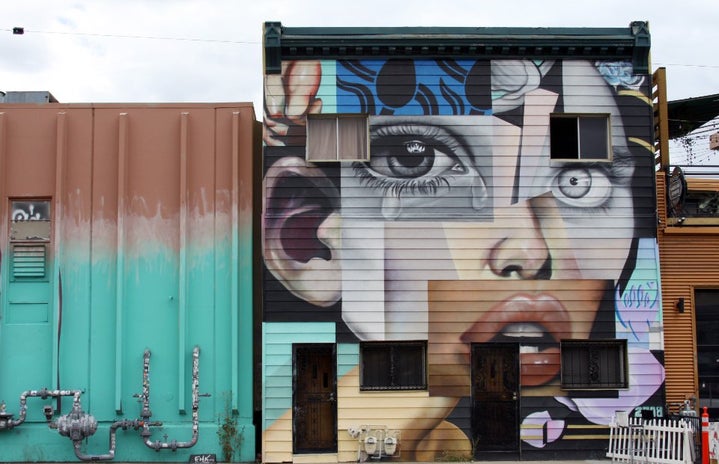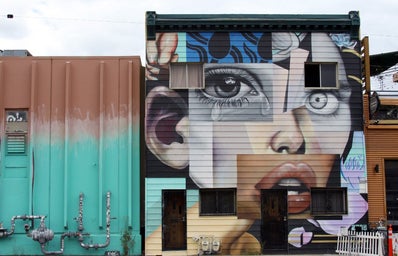For centuries, the female body has been of interest to many male artists, like; Vasari, Michangelo, and Botticelli. This week, Sophie argues whether the ‘gaze’ has been reinterpreted by the female artists of the nineteenth century, in order to reclaim their body and image.
Times of the Male Gaze
The artistic stage up until the nineteenth century (when the first wave of feminism began) had been subjugated to the male gaze. Although there were female artists circulating around the discipline before the wave of feminism hit, undoubtably art was dominated by the male. As a result of this the way in which the female figure was presented and constructed was through the male gaze.
The term ‘male gaze’ was coined by Laura Mulvey, commenting that in art, women are routinely looked and and displayed – with their appearance meeting rather erotic stereotypes – in order to create this sense of visual art. Mulvey’s idea hints that in the past, the female body has become an object of sexual desire in art. It is possible to see this perception through many pieces from art from the last few centuries.
La Conchiglia Di Venere
Giorgi Vasari’s painting of Perseus and Andromeda in 1572 depicts a nude woman, placed at the forefront of the piece. In my opinion, the female body is subjected as an object of desire for Perseus here – who is trying to unchain Andromeda in this particular depiction. Here, Vasari’s work could be said to add to the long constructed stereotype of the female body having a role in being an object of desire: something for men to lust over and sexualise.
Personally, I find the positioning of Andromeda interesting, as she is central in the painting, with the other elements seemingly constructed around her figure, and being. There is a sense of discomfort in the way Vasari present the female body, as it is likely that her feminine figure is attracting our gaze, as if she is an erotic spectacle to be observed, by the male gaze.
Times of Change?
However, in the nineteenth century, there was a shift in this stereotype. A new wave of feminist artists emerged, and began challenging the hegemony of the male gaze, seeking to regain the female body from the clutches of their male counterparts. They aimed to give the subject back to herself, transforming her from an object of desire, to a subject of brilliance.
Although the major Feminist Art movement took flight in the 1960s and 1970s, there were some other feminist artists who produced boundary-defying art before this period. Georgia O’Keefe was one of these fore mothers, who challenged the male-dominated discipline and experimented with the depiction of the female body – drawing a connection between nature and the world – rather than male desire and the feminine figure.
Many art critics (like Rozsika Parker and Griselda Pollock) established the Women’s Art History Collective in 1973, after observing a lack of female-produced art in the Western archives. Following on from this, Linda Nochlin and Ann Sutherland-Harris produced the first international female-only exhibition in 1976. The ‘Women Artists: 1550-1950’ aimed to promote feminist art, as well as recognising the forgotten works and voices of female artists from before.
Thus movement still continues today, with many artists producing new lenses to provoke emotion through.
today
For myself three artists which evoke me, are Lys Hansen, Mickalene Thomas, and Jenny Saville. Three completely different creators stylistically but are conjoined through their subject and exploration of the female body. I find what is most striking about these artists is their experimentation with form and proportion. When thinking back to Vasari’s depiction early of the female, here there is a celebration rather than a sexualisation of the female body.
Hansen and Saville in particular present it in its natural, bodily, real state. Thomas’s interest in exploring the African American female body and recognising its beauty and power, and its lack of representation in art history is something I find inspiration and celebratory. Moreover, Saville’s realism in her depiction of the feminine body, and her un-ashamed attitude to present an unfiltered, unconventional, raw perspective on beauty and the female figure to society, is empowering. Additionally, Hansen’s portrayal of the female body is not refined and perfect in the conventional sense, but the female body is shown as strong and glorious and worth recognition.
looking to the future
The reclamation of the female body is something that will be continually explored, argued, and experimented with, through the female gaze. Female artists at this current moment are creating their own interpretation of the female figure, breaking down archaic, idealised, fetishised, sexualised imaginings of the female’s body in art history.
I find that looking at the work of contemporary artists working on the female body, I am extremely evoked at the defiance and empowerment on display. But also, at what their art is trying to achieve and that is to retrieve, recover, return, and reclaim the lost and contorted female body back to herself, allowing her to reshape her body and real her.


